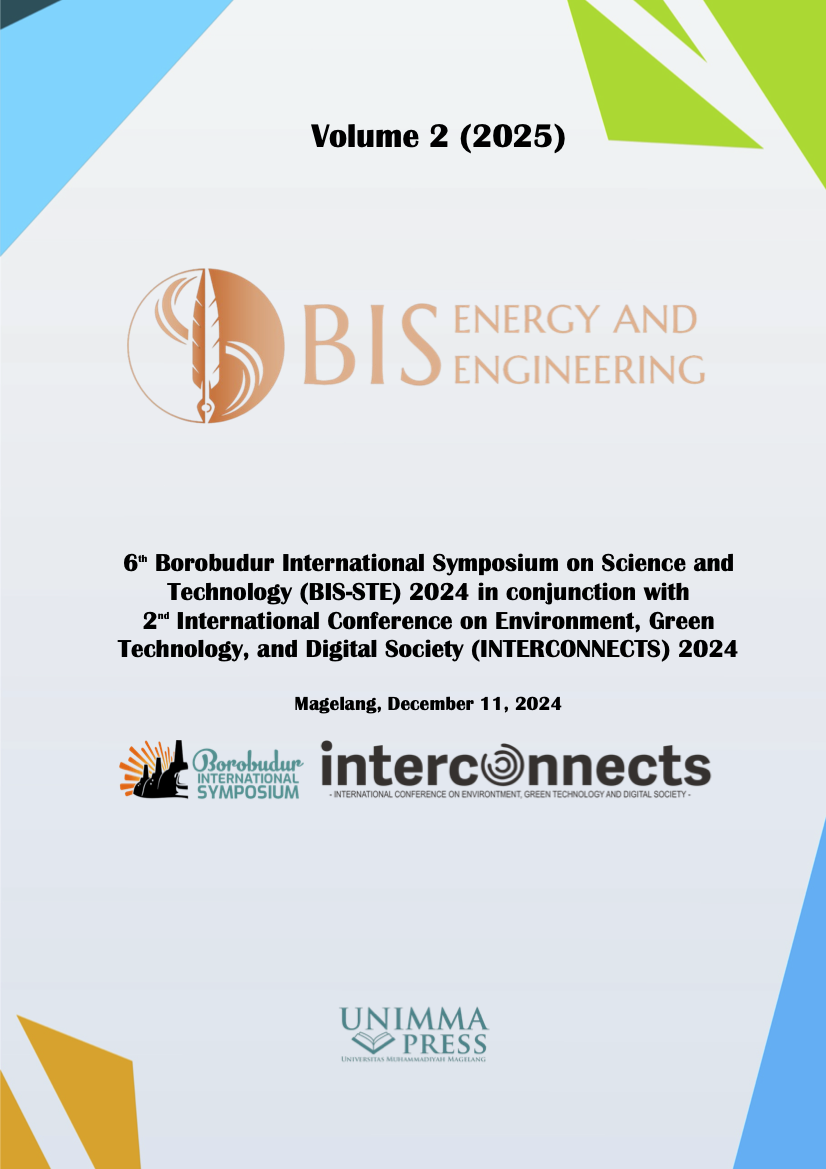The effect of gear variations on the wind turbine alternator side on the voltage and electric current generated in a 4-stroke motorcycle
Keywords:
Gear, Alternator, Turbine, Voltage, CurrentAbstract
In order to be used, hydrogen-electric vehicle fuel must go through a process of separating water molecules and verification (electrolysis) to produce hydrogen and oxygen. Previous research has shown that the voltage and electric current produced in this process tend to be small, thus requiring greater resources. By adding variations in the teeth on the generator side, the voltage and current produced can change, either for the better or for the worse. The method used in this study is the pinion experimental method which was tested at speeds of 40 km/h, 50 km/h, 60 km/h, and 70 km/h. The results of the voltage test show that at a speed of 40 km/h, a voltage of 3.1 V and a current of 0.07 A are produced. At a speed of 50 km/h, the voltage increases to 4.0 V with a current of 0.27 A. At a speed of 60 km/h, a voltage of 4.9 V and a current of 0.36 A are produced, while at a speed of 70 km/h, the voltage reaches 5.9 V with a current of 0.43 A. Based on the average values obtained, the electrolysis process can be carried out because the process requires a minimum voltage of 5.8 V.
References
[1] I. Rahardjo, “ANALISIS POTENSI PEMBANGKIT LISTRIK DIINDONESIA,” 2018.
[2] P. Hidayatullah, “Diskursus Bahan Bakar Air,” 2015, Jakarta.
[3] R. Wahyudi, W. Purwanto, H. Maksum, M. Y. Setiawan, and Y. G. Sampurno, “The Effect of Electrolyzer Installation on 4-Stroke Modified Injection Motorcycle on Fuel Consumption and Exhaust Gas,” MOTIVECTION : Journal of Mechanical, Electrical and Industrial Engineering, vol. 5, no. 2, pp. 415–426, 2023, doi: 10.46574/motivection.v5i2.238.
[4] D. A. Wicaksono, “PROSES ELEKTROLISA PADA PROTOTIPE"BAHAN BAKAR AIR" KENDARAN BERMOTOR DENGAN PENGONTROLAN KUALITAS AIR BERBASIS AVR ATMEGA 8535,” 2019, Jember.
[5] Yanda Septian Putra, “Analisis Bodi Tambahan Pada Sisi Alternator Turbin Angin Pada Bodi Knalpot Motor Terhadap Tegangan dan Arus Listrik Yang Dihasilkan,” vol. 4, no. 1, 2023.
[6] S. Lubis, “Rancang Bangun Altenator Mobil Sebagai Pembangkit Energi Listrik Alternatif,” 2019, Medan.
[7] Soebyakto, “Sistem Transfer Daya Dari Dua Jenis Mesin Yang Berbeda,” 2022.
[8] A. Sauky et al., “Jurnal Sauky Terbit,” vol. 10, no. 2, pp. 2–4, 2021.
[9] K. Alfiansyah, “Proses Pembuatan Roda Gigi Miring Pada Mesin Kertas,” Jurnal Kajian Teknik Mesin, vol. 8, pp. 1–8, 2023.
[10] A. Supardi, A. Budiman, and N. R. Khairudin, “Pengaruh Kecepatan Putar dan Beban terhadap Keluaran Generator Induksi 1 Fase Kecepatan Rendah,” Emitor: Jurnal Teknik Elektro, vol. 16, no. 1, pp. 26–31, 2016, doi: 10.23917/emitor.v16i1.2680.
[11] D. S. Charismana, H. Retnawati, and H. N. S. Dhewantoro, “Motivasi Belajar Dan Prestasi Belajar Pada Mata Pelajaran Ppkn Di Indonesia: Kajian Analisis Meta,” Bhineka Tunggal Ika: Kajian Teori dan Praktik Pendidikan PKn, vol. 9, no. 2, pp. 99–113, 2022, doi: 10.36706/jbti.v9i2.18333.
Downloads
Published
Conference Proceedings Volume
Section
License

This work is licensed under a Creative Commons Attribution-NonCommercial 4.0 International License.

